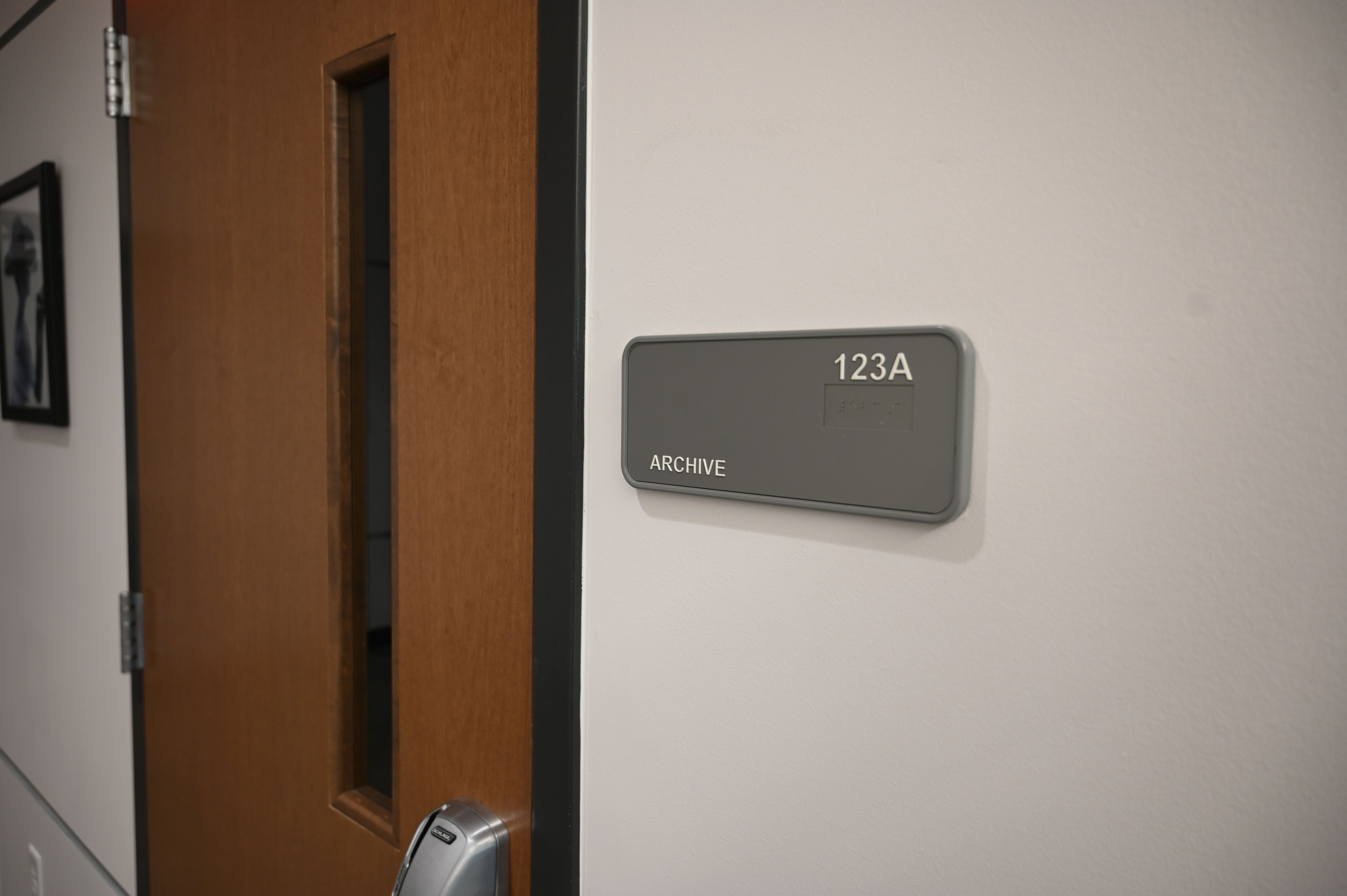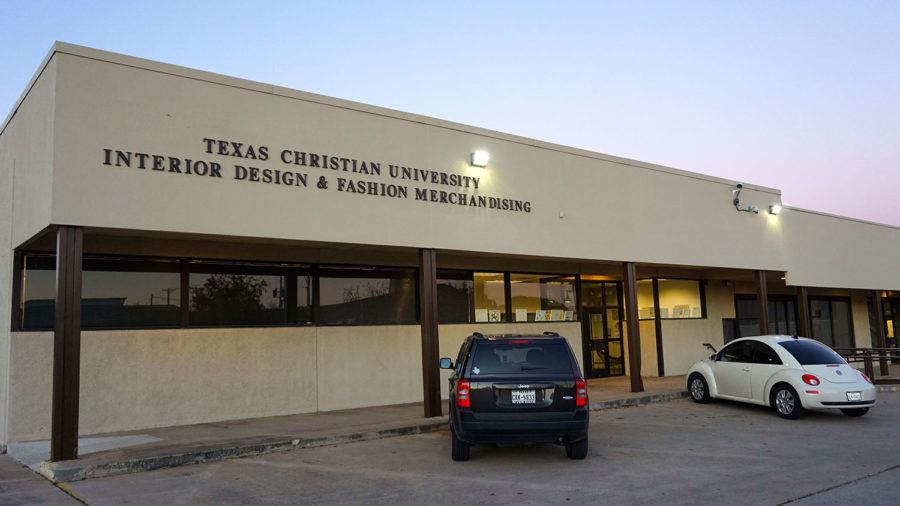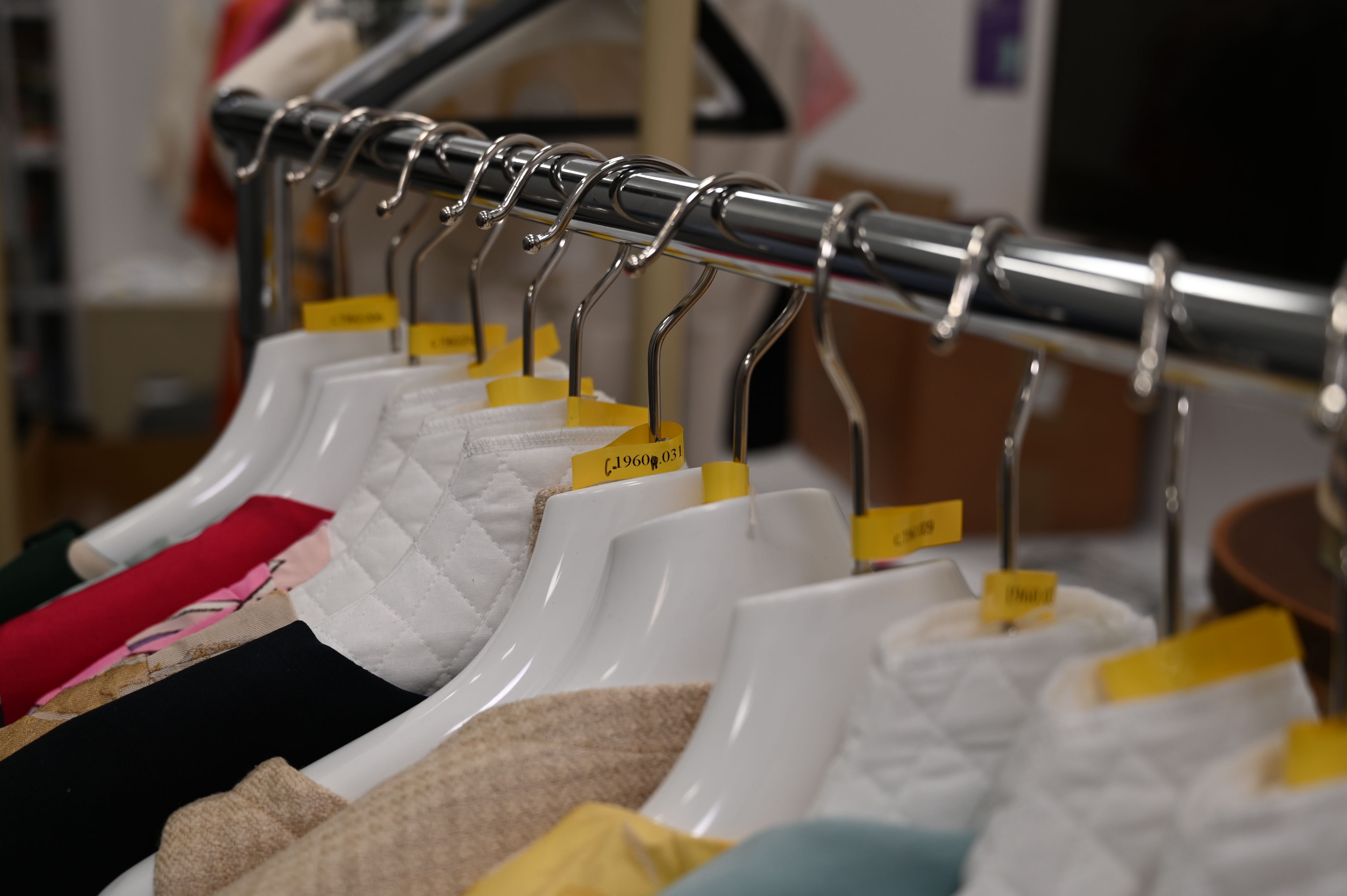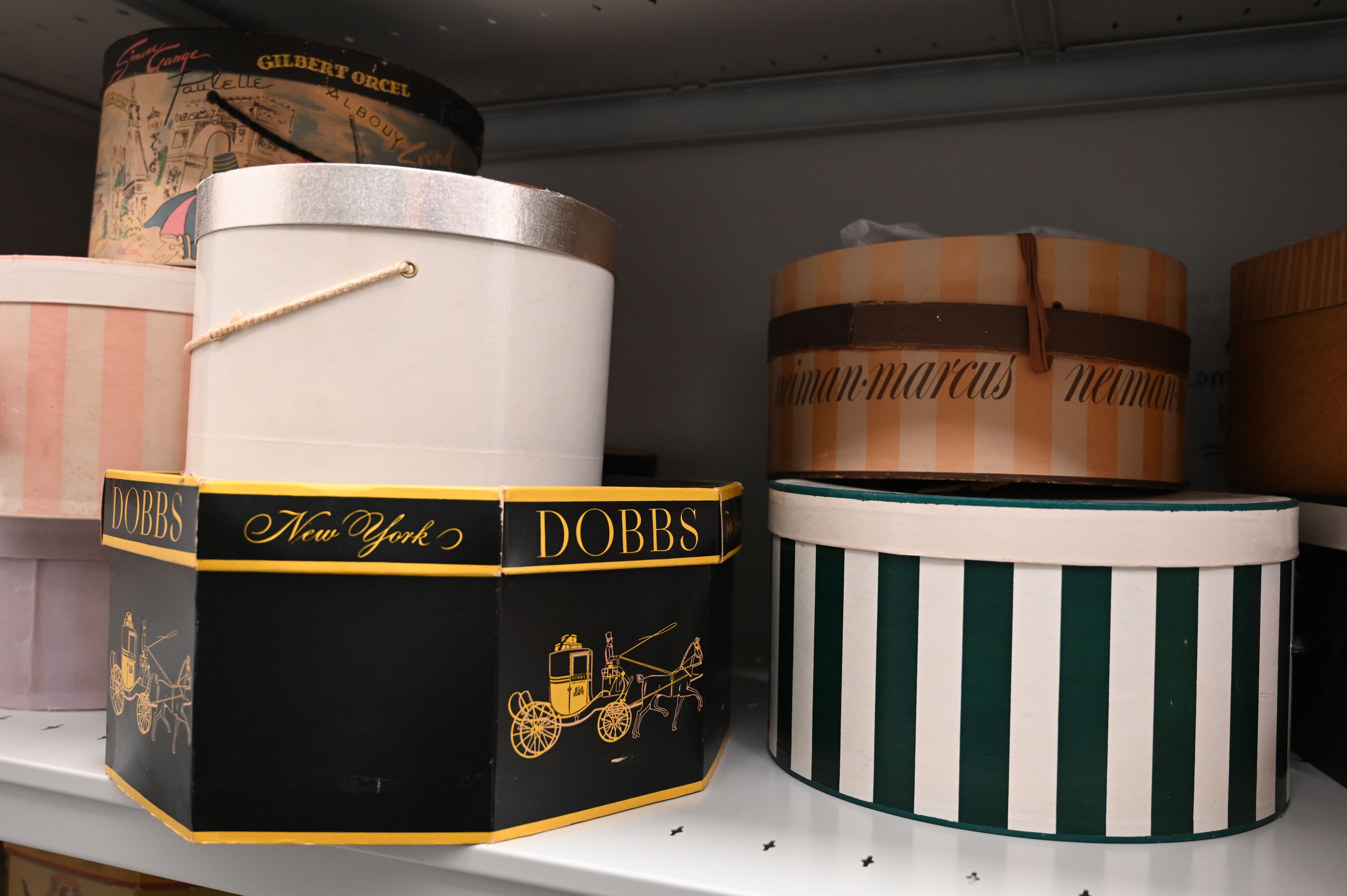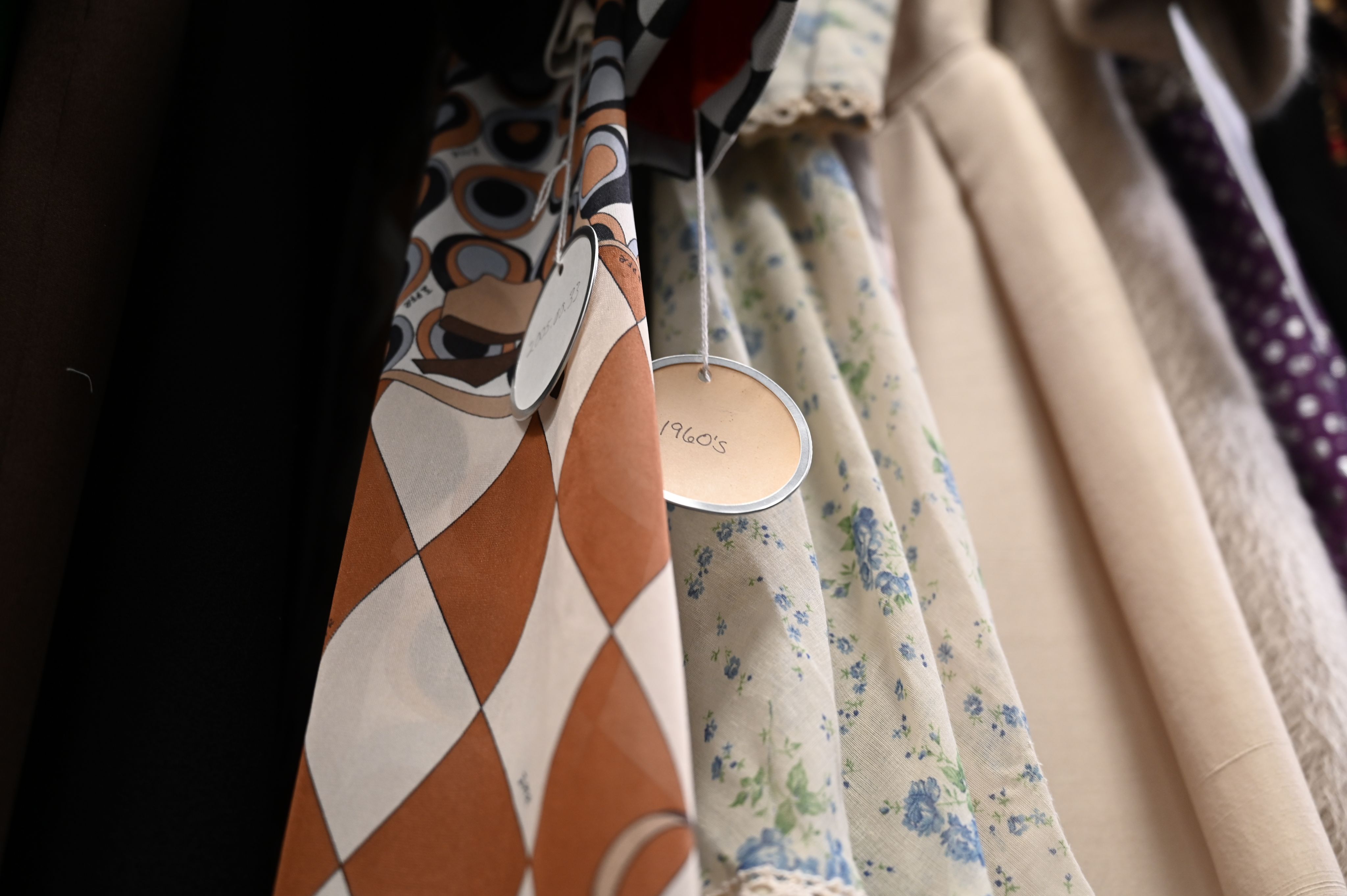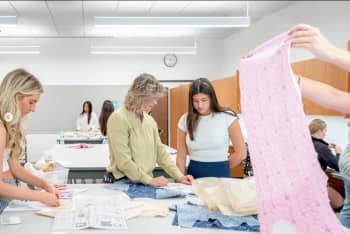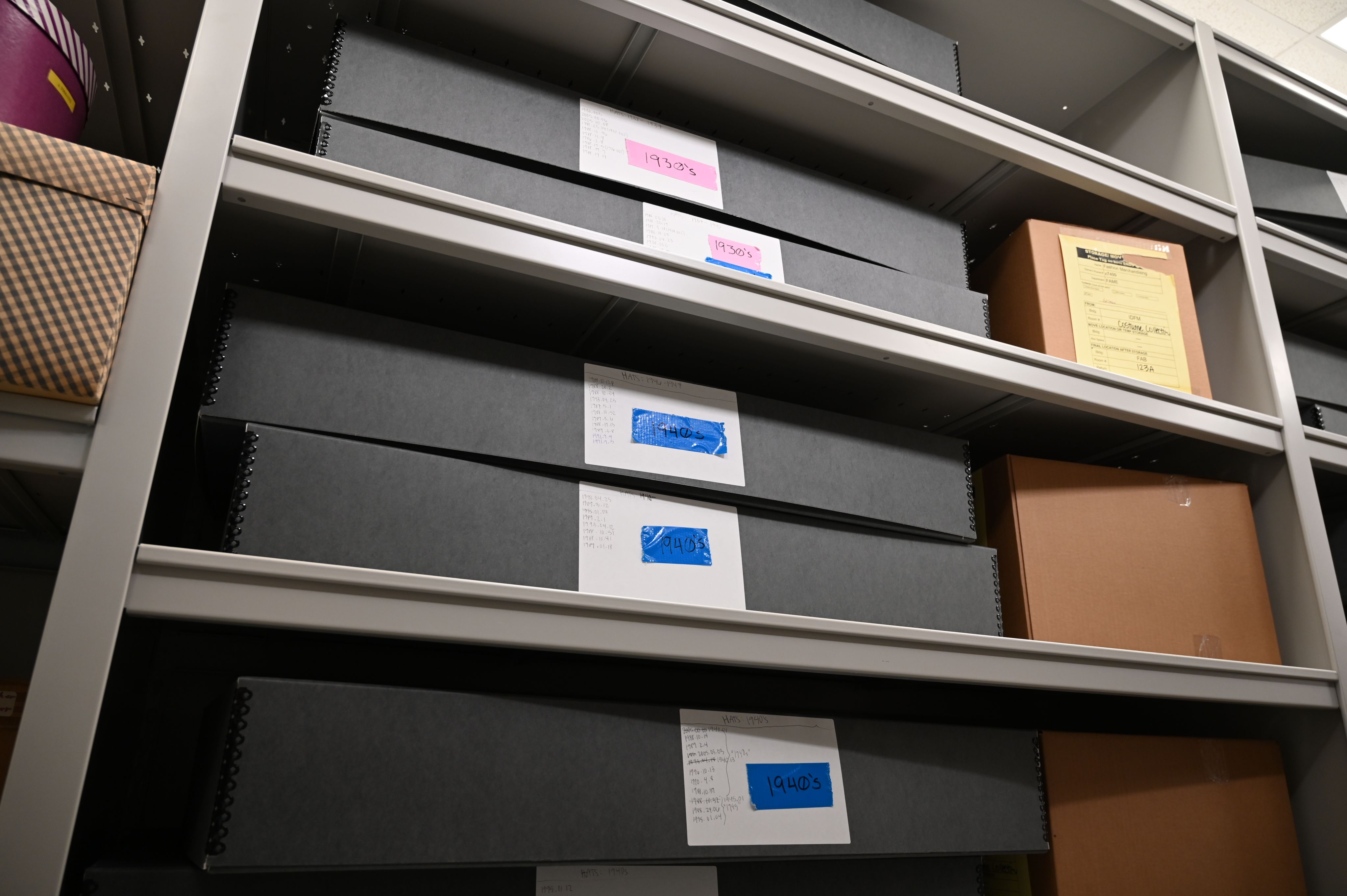Threads of time: Exploring TCU's historical costume collection
The past, present and future of the Department of Fashion Merchandising's best asset
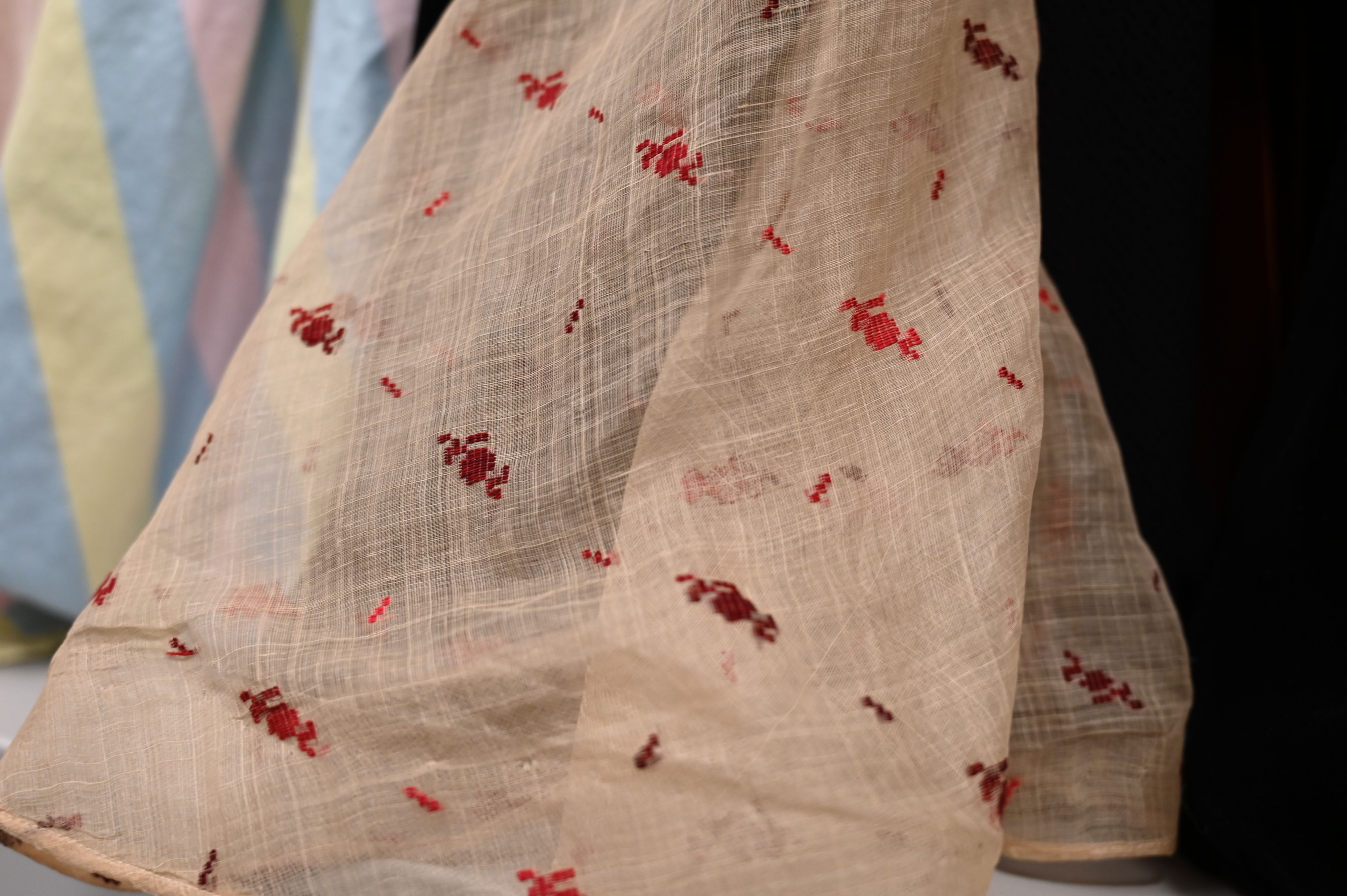
Tucked away in the Fine Arts Building, past classrooms and studios humming with creativity, a quiet, unassuming door reads “Archive.” Few students ever stop to wonder what’s behind it — let alone know that it guards one of TCU’s hidden gems.
Behind a door labeled “Archive” in the Fine Arts Building is a large collection of clothing and accessories that most students don’t even know exist. This archive is the TCU Historic Costume Collection.
The collection is quite special and different from most costume collections. There are many pieces linked to the Fort Worth community, preserving not just fabric and fashion, but stories stitched into the seams of local history.
The door that leads to the TCU Historic Costume Collection (Madelyn Hayden).
The door that leads to the TCU Historic Costume Collection (Madelyn Hayden).
The outside of the interior design and fashion merchandising building in 2015 (TCU 360).
The outside of the interior design and fashion merchandising building in 2015 (TCU 360).
Beginnings
The TCU Historic Costume Collection began in 1984 by Professor Margaret McWorter as a small collection of hats. McWorter used these hats as examples in the classroom, but soon the collection grew with more items.
Fashion Merchandising professor and collection curator, Stephanie Bailey, was a student of McWorter and has a passion for historical dress. Bailey took over the collection when she began teaching full-time 16 years ago.
“As a student of Professor McWorter, I decided to take over the collection because I liked her and it was something I wanted to do for her," Bailey said. "I didn’t realize how much I was getting myself into.”
The task of taking over the collection was daunting, but Bailey has made it into the successful collection it is today.
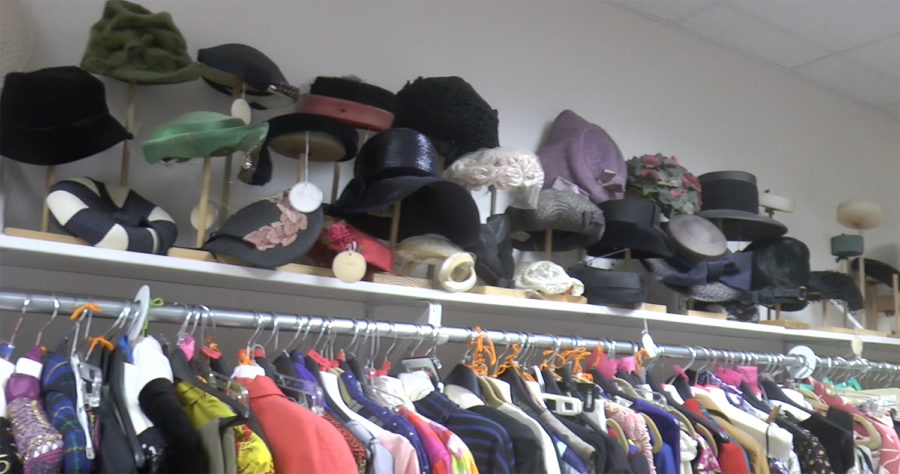
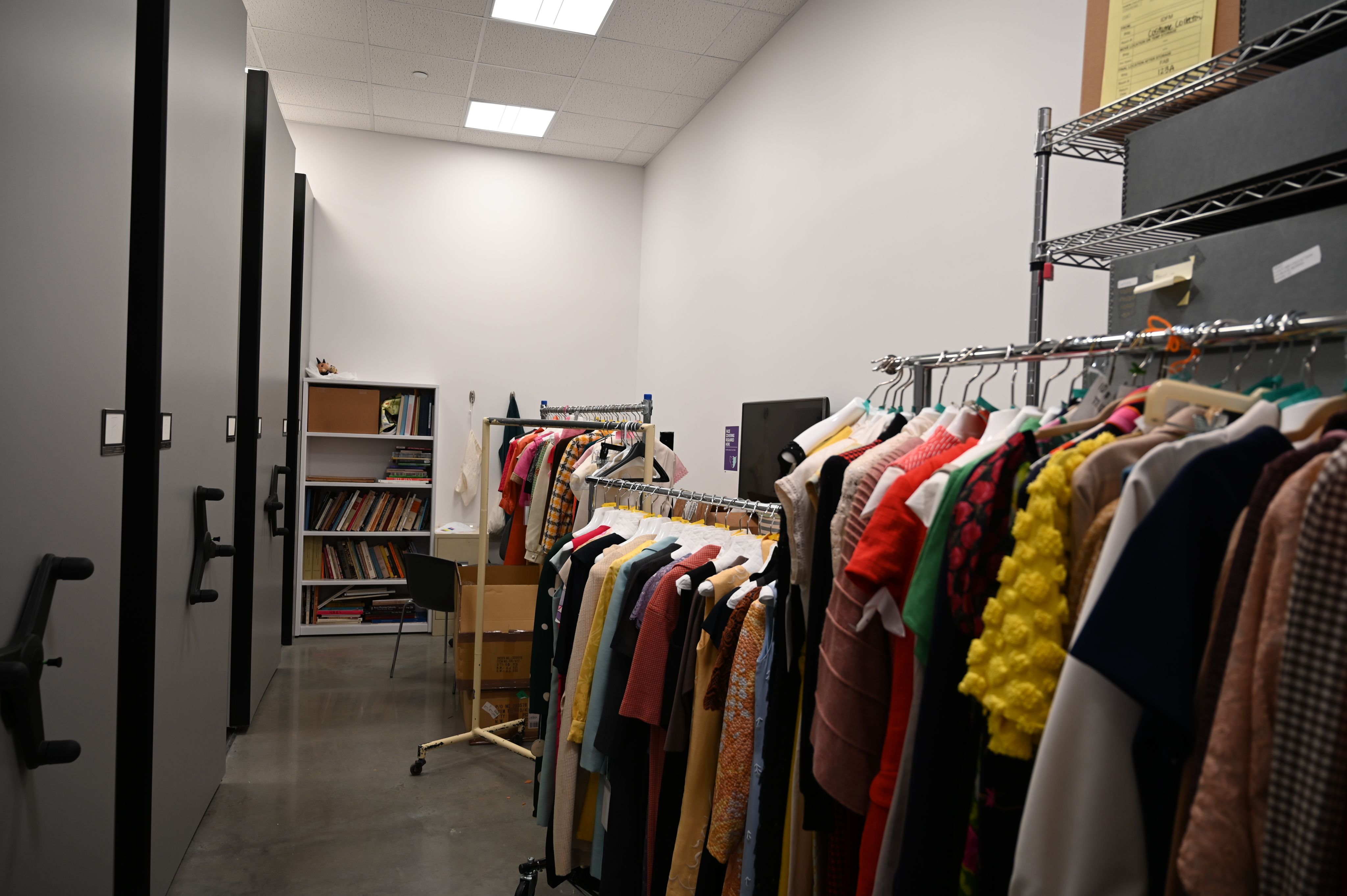
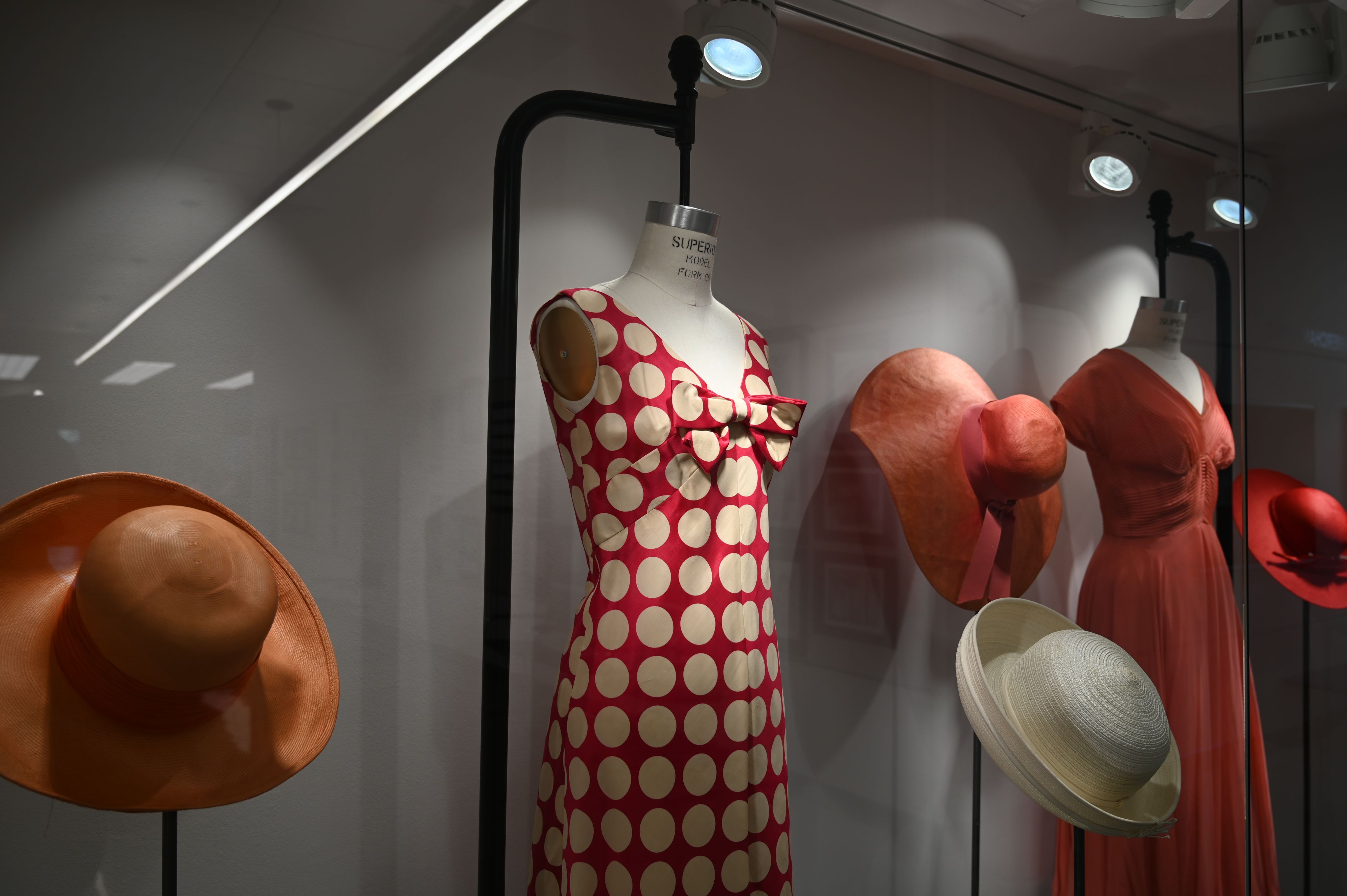
The TCU Fine Arts Building opened in Fall 2019. In the original building, the costume collection was located in a storage closet without a proper storage system. Instead, everything was placed on a large rack or in a box.
Since moving to the new building, the historic costume collection has a new layout with the proper storage techniques. There are multiple bays of racks and shelves for storage. The garments are organized through a tagging system by item, year, and fabrication. They are also organized by what Bailey has been able to go through and not.
“I have an online database I work on that stores the image and data of each piece," Bailey said. "Some pieces already have all their information filled out, while others I have to create a whole new entry."
The rate at which the items get processed is based on the amount of time Bailey is able to work on it since she is the sole curator that works on the historic collection.
“I had a lot more time this semester to work on the collection with fewer classes, so I have gotten a lot more done than I usually do,” Bailey said.
In addition to the new storage facility, the costume collection gained a window display box inside the FAB. This window display was created to highlight certain pieces from the collection for students and visitors to see. This window also has special LED lighting and temperature controls to help preserve garments while they are on display.
“I usually choose what goes into the display window based on the season, but sometimes I also get suggestions,” she said with a laugh.
Last spring, when she would usually display historic swimsuits as students gear up for summer, she took the advice of the new department chair of the Fashion Merchandising department, Charles Freeman, and created a display about the Kentucky Derby.
The collection itself
Since the collection's inception in 1984, the historic costume collection has grown to 2,500 pieces total. This number has stayed relatively the same since previous reports on the collection in 2013 and 2018.
Bailey has a lot of aspirations for the collection, but because of the limited space there are little changes that can be made.
“I wanted to slim down the collection and be able to get more bigger and important pieces that match our collections needs” she said.
Most of the collection has been acquired by donations from many different patrons of the Fashion Merchandising program. Bailey’s biggest concern with donations is that donors are just trying to get rid of their own stuff instead of matching what the archives need.
“I don’t want an excess of items in poor condition or something similar to what we have already in the collection” Bailey said.
As of now she goes through a lengthy selection process to acquire new pieces into the collection by assessing photos and evaluating the collection for what is needed.
The oldest piece in the collection dates around the 1850s. The youngest piece was a recent donation from Fort Worth philanthropist, Mercedes Bass, from the Texas Fashion Collection dating around the 2000s.
Most college collections boast about being large and contain thousands of items. TCU’s costume collection goes against the typical norms, but offers a different perspective.
“TCU’s collection is deeply rooted in Texas history and Southern fashion narratives, offering a more curated and locally meaningful perspective," Freeman said. "It includes garments that reflect Fort Worth’s western heritage, the state’s role in fashion retail, and the social lives of women in the South."
Having a collection rooted in the city it is located in, showcases the local outreach TCU has in Fort Worth, in which the university prides itself.
Garments hang on a garment rack with ID tags (Madelyn Hayden/TCU 360)
Garments hang on a garment rack with ID tags (Madelyn Hayden/TCU 360)
Historic hat boxes stored inside the collection (Madelyn Hayden/TCU 360)
Historic hat boxes stored inside the collection (Madelyn Hayden/TCU 360)
Tags hang from garments hanging in the bays of the collection (Madelyn Hayden/TCU 360)
Tags hang from garments hanging in the bays of the collection (Madelyn Hayden/TCU 360)
Collection usage as an educational purpose
Bailey teaches two main classes each semester in the Fashion Merchandising department. Her classes integrate the historic collection into it to give her students a better understanding of the content they are learning.
Her History of Modern Dress class studies the political, economical, technological and social aspects of a certain historical time period, and which of those influences changed dress the most.
The class requires a lot of research on garments, which is hard to see details online. When applicable to class, Bailey will bring in garments from the collection to give a more visual and physical understanding of what garments looked like during these time periods.
Rio Centers, a senior Fashion Merchandising student, enjoyed having a physical visual aid in class.
“There was a lot of learning with the historical garments that goes beyond a textbook," Centers said. "She had us walk around looking at the clothes and compare/contrast what we thought compared to what we had researched about the time periods."
A very similar approach is taken in Bailey’s Apparel Construction class. For exams, she makes students walk around the classroom and identify certain stitches and seams found on clothing.
“Getting to actually visually see something and feel the garment definitely makes you realize how well things were constructed and make obvious what stitches or seams are used,” Centers said.
Bailey’s long term goal for the collection is to be used for more than just her courses.
“I had a couple of professors request to use items from the collection this semester, but I want to get the collection to a point where we can be utilized in more classes,” Bailey said.
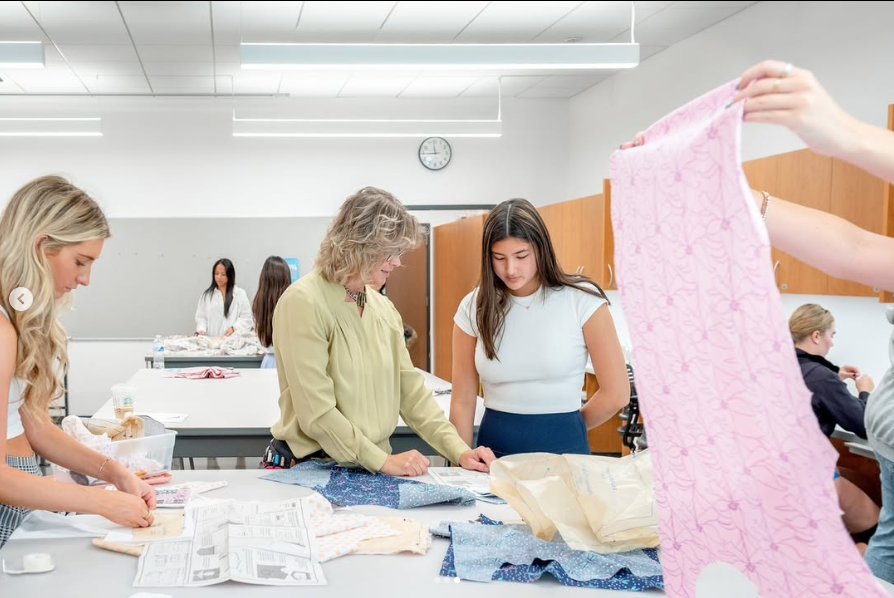
The importance of the collection
Preservation of historic dress protects cultural identity and a way of life for those from a different time period. Garments allow insight into past lives, traditions, social history and values. These pieces are educational and inspirational tools to evaluate the circularity of trends and for the future of fashion.
Having the opportunity of having the collection as a study tool is invaluable to students. It allows them to have a more well-rounded perspective of historical dress and apparel construction understanding.
“Understanding the history of fashion gives insight to the political, economical, social and technological components of the time period," Bailey said. "Having that insight can help predict trends and reflect on the past. Knowing the past will allow us not to do the same in the future."
The TCU Historic Costume Collection enhances the Fashion Merchandising program by strengthening its academic credibility, supporting research opportunities, and distinguishing it as a program rooted in both historical preservation and community relevance.
“A historic costume collection is an invaluable resource for a fashion program because it bridges the gap between theory and practice," Freeman said. "It provides hands-on learning, connecting students to past craftsmanship, materials, and cultural influences. It supports research, curatorial training, and helps inform sustainable, innovative design practices.”
Hats and accessories stored in boxes in the bays of the collection (Madelyn Hayden/TCU 360)
Hats and accessories stored in boxes in the bays of the collection (Madelyn Hayden/TCU 360)
Looking to the future
With Freeman as the most recent department chair for Fashion Merchandising, much needed updates are coming to the program. Last school year, there was an expansion in elective classes and modernization updates to existing classes, including an introduction into 3D design.
These updates being made to the program is also becoming applicable to the historic collection. Currently with Bailey as the only person working on the collection, there are many goals she wants to achieve to make the collection better and more accessible.
One of the goals Bailey wants to accomplish is to have enough items in the collection that she can evaluate it every two years to determine what the department does and does not need. Doing this keeps in line with the collection’s mission and keeps the collection relevant.
Another goal Bailey has is through donations.
“I would like to receive more monetary donations that allow us to acquire bigger, important items that fill the gaps in our collection,” Bailey said.
In alignment with changes coming with TCU’s Master Plan, there is a focus on creating more public humanities and research with the historic collection.
“We're actively pursuing funding to support staffing, digitization, and curriculum integration for the collection," Freeman said. "The goal is to turn the collection into a dynamic teaching and research asset, not just for fashion students but for the entire TCU community."
The Department of Fashion Merchandising wants to make the database that Bailey uses accessible to students and faculty for research purposes. Bailey also wants to make it almost like a library system for professors to be able to check out items in the collection to be used for teaching.
With excitement building around new initiatives and growing student engagement, the TCU Historic Costume Collection stands poised for a vibrant future that honors the past while embracing the changes ahead.
Click the link below to view collections and items in the TCU Historic Costume Collection!

